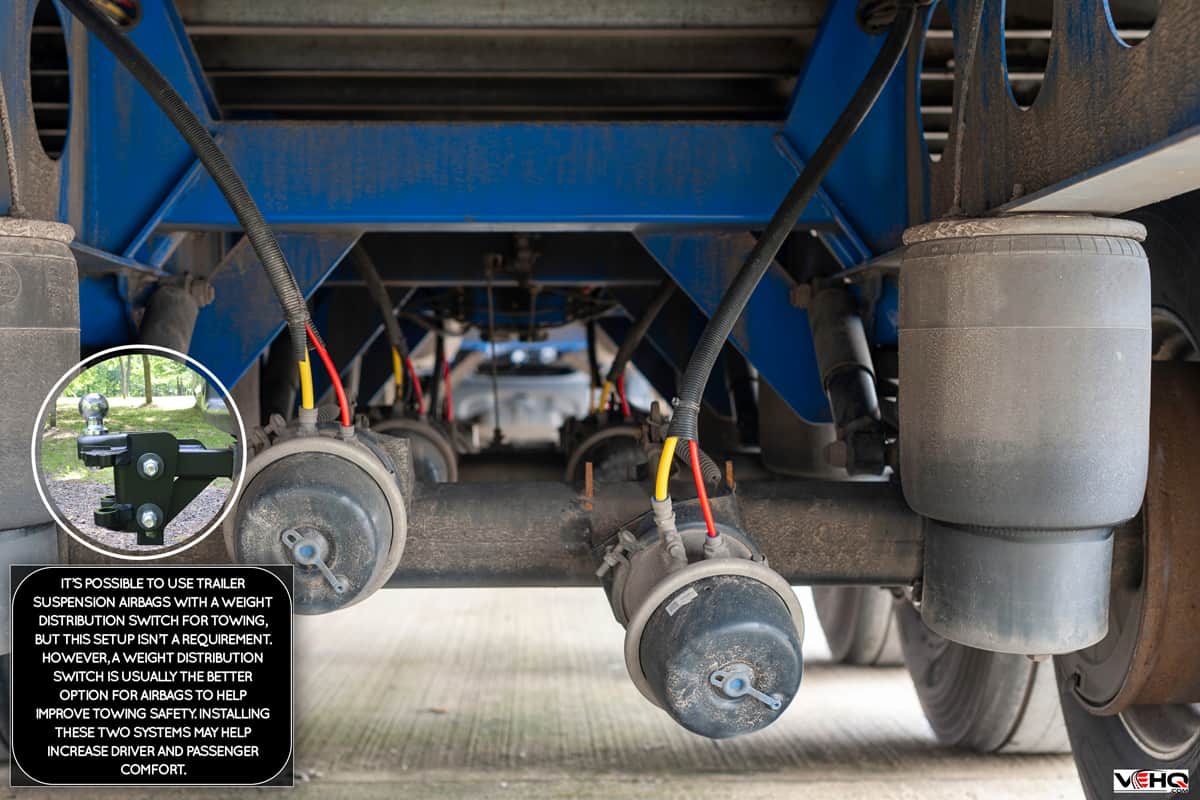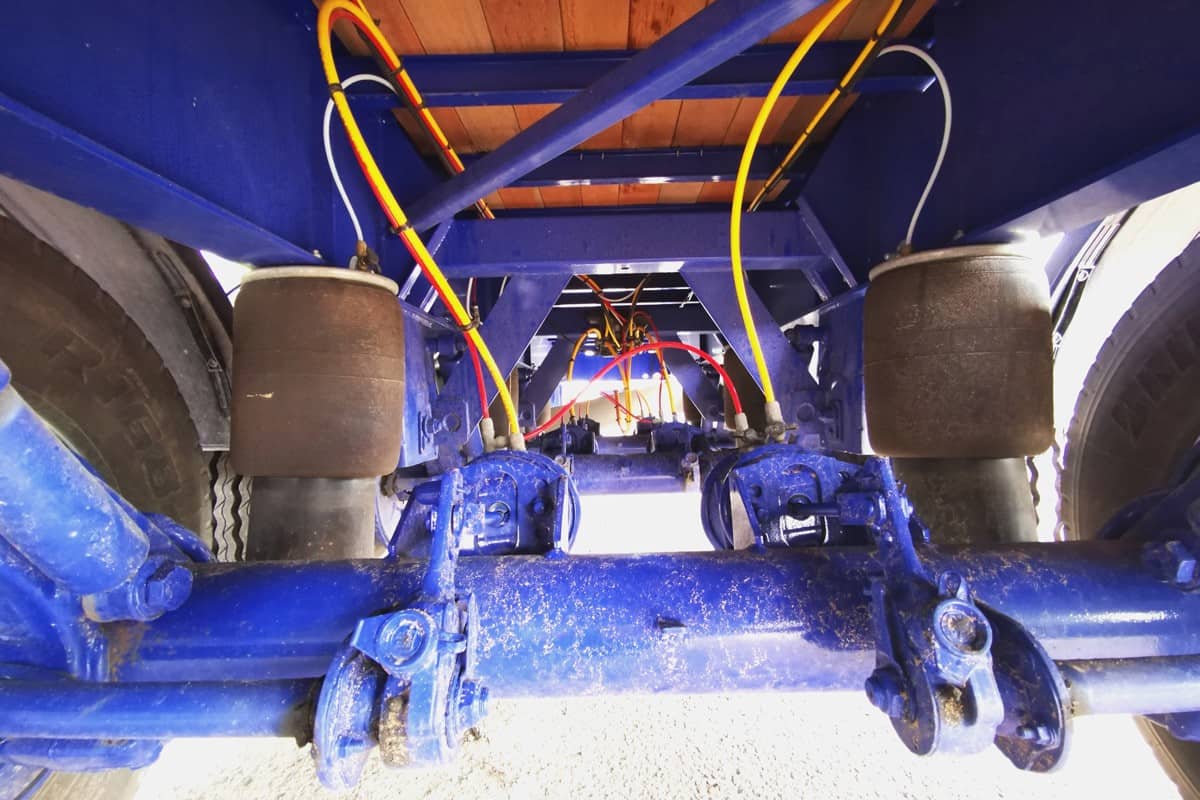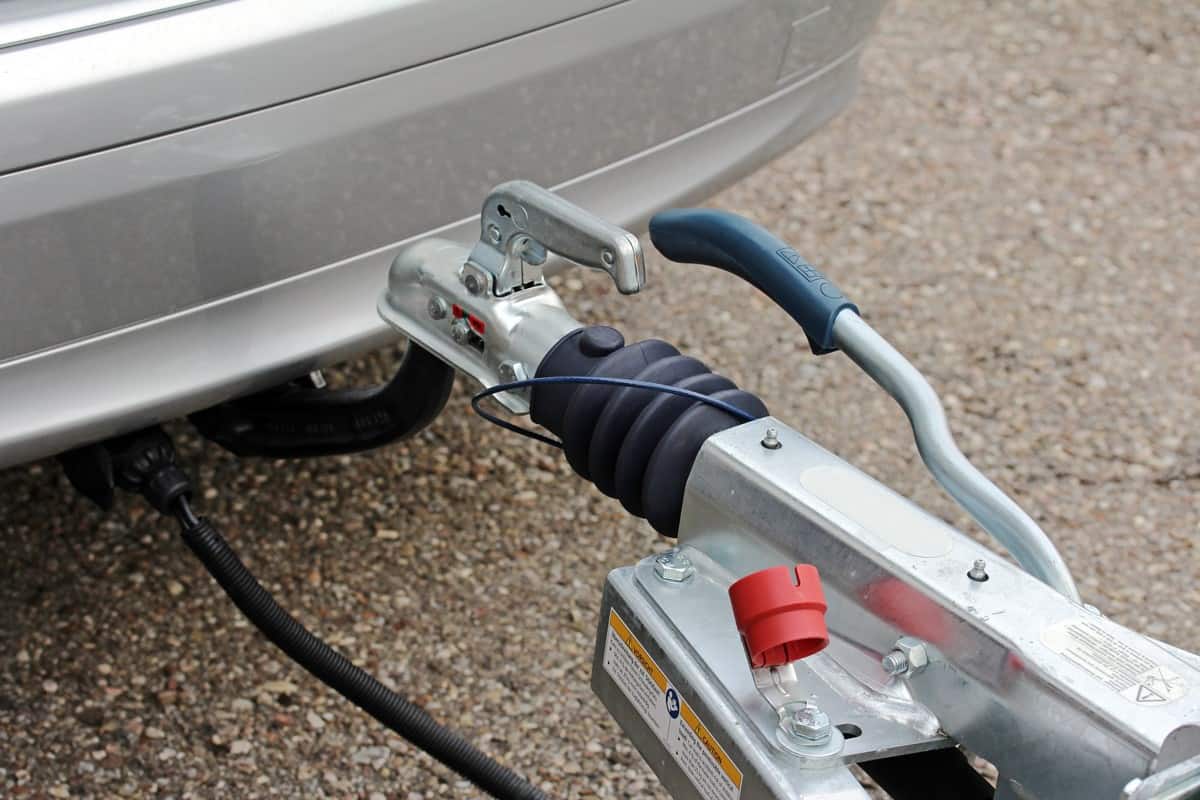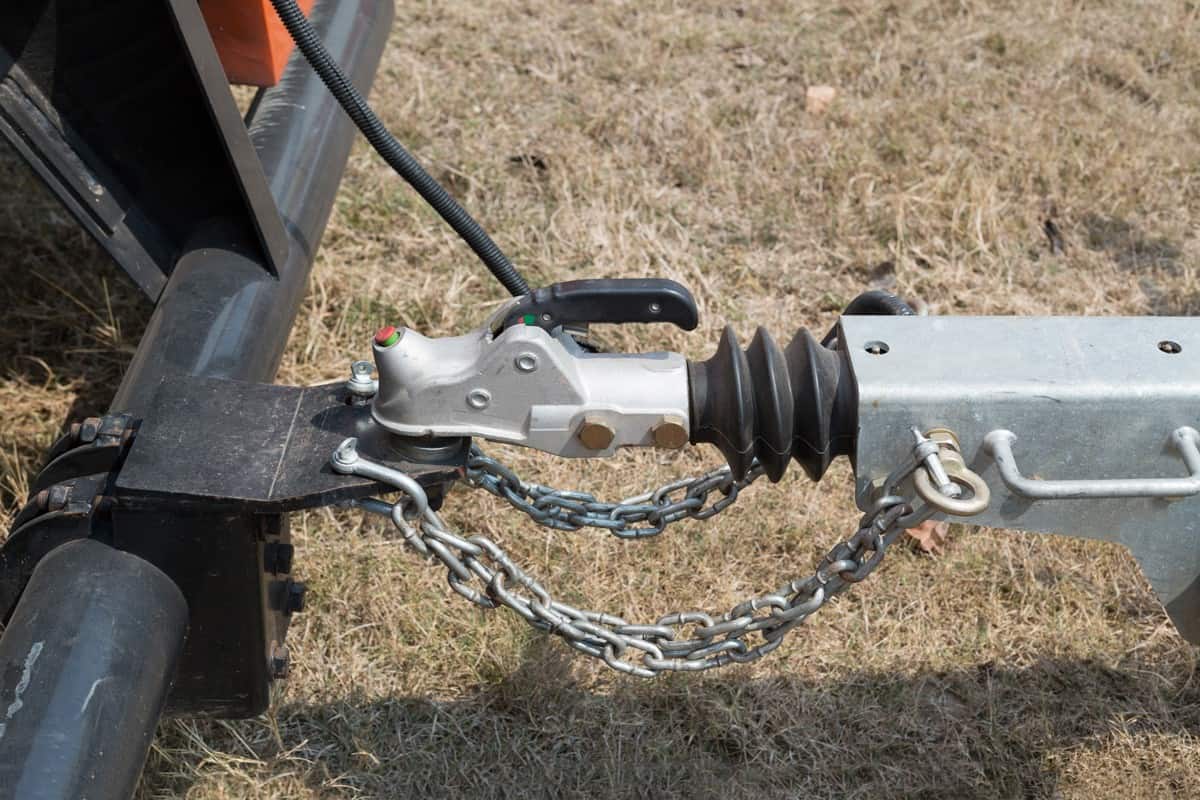Staying safe while towing should always be a priority. Now, you’re wondering if you should use airbags with a weight distribution hitch. We researched and asked different industry experts to find you an answer.
It’s possible to use trailer suspension airbags with a weight distribution switch for towing, but this setup isn’t a requirement. However, a weight distribution switch is usually the better option for airbags to help improve towing safety. Installing these two systems may help increase driver and passenger comfort.
But does that mean that you don’t need to use airbags for towing? Continue reading as we dive deeper into this subject matter. We’ll also tackle other relevant and important topics, such as the pros and cons of weight distribution hitches and airbags.

Do Airbags Replace Weight Distribution Hitch?

Although trailer suspension airbags and weight distribution hitches work similarly, the former cannot replace the latter. The reason is that weight distribution hitches help remove the weight from the rear axle. The withdrawn weight then transfers to the front axle of the towing vehicle and the trailer's axles.
In comparison, suspension airbags work like balloons. These accessories help keep the towing vehicle from squatting from the additional weight delivered by the towed load.
In other words, a weight distribution hitch aims to keep the heaviness of the entire towing setup as evenly dispersed as possible, but airbags often only function to support the towing vehicle from dipping lower than usual because of the hauled load during bumpy rides.
You might also be curious to know if it’s possible to tow a travel trailer without sway bars. We have a post highlighting that concern that you can read to know the answer.
Will Airbags Help Trailer Sway?
Airbags don’t usually help realign a towing setup if the hauled load, such as a travel trailer, sways during towing sessions. As mentioned in the previous section, airbags often aim to help reduce unwanted sag to the tow vehicle’s suspension. Hitches like weight distribution models often do a better job of controlling trailer sway than airbags.
What Is Better Weight Distribution Hitch Or Airbags?

Weight distribution hitches and airbag suspension systems have their distinct advantages and shortcomings. That also means that weight distribution hitches are more advantageous than airbags. However, you can also say the same with airbags in certain aspects.
So keep reading through this section to know the pros and cons of these towing accessories:
Weight Distribution Hitch Pros And Cons
Different weight distribution hitches are available on the market, and each model typically offers distinct benefits and shortcomings. However, these towing assist systems often share numerous advantages across their product class, such as:
- Even weight distribution across the towing vehicle and towed trailer’s axles
- Real-time weight adjustment features
- Reduces sway from wind caused by weather or passing vehicles
- Features can remain active during on-road and parked scenarios
- Optimal tailgate clearance to prevent harm to the rear areas of tow trucks
Despite its list of possible benefits, weight distribution hitches may also have some drawbacks. For instance, certain models may promote front-end collisions. This event might also result in tripling structural damages. But you can avoid this concern by ensuring that the installed weight distribution hitch can handle the weight of the hauled load.
You might also be wondering if a weight distribution hitch can reduce tongue weight. If so, read our post on that topic to know the answer.
Airbags Pros And Cons
The relative straightforwardness of suspension airbag systems might play a role in the increase in their market values. Aside from the easy-to-use nature, airbags may also provide other benefits like:
- Reduction in towing noises and vibrations leading to increased driver and passenger comfort
- Reduced risks of wear and tear to the on-board suspension systems of tow vehicles
- Helps improve ride height and ground clearance*
- Increased cornering speeds, thanks to the sag-reduction features
*Improvement differs for each air suspension system.
Like weight distribution hitches, airbags aren’t perfect towing accessories. So expect airbag suspension units to have certain drawbacks like:
- Reduced fuel economy for the tow vehicle
- Frequent sag prevention may result in air leaks and other malfunctions
- Possible moisture damage and rust buildup from within the system
Also, airbags might be costlier than weight distribution hitches. Prepare to spend around $500 to $2,000 to buy a quality airbag system. Plus, you may need to spend an additional $1,000 to $3,000 for professional services to handle and complete the installation.
On the other hand, weight distribution hitches are often simpler towing accessories than airbag systems. So you may only need to spend approximately $200 to $400 to purchase a quality weight distribution hitch. At that price range, weight distribution hitches might be better for budget-conscious buyers than airbags.
How Do You Install Airbags On A Trailer?

Take note that an airbag suspension system will work best with proper installation. Different airbags may have different installation guidelines, so consult your product owner’s manual first to verify the correct steps in setting up your purchased airbag system to your trailer correctly.
Nonetheless, here's a look at how to install airbags on a trailer to help you gain insight into how to complete this procedure:
What You’ll Need
- Allen wrench set
- Socket wrench set
- Adjustable standard wrench
- Tubing cutter
- Air compressor
Step-By-Step Guide
- Park your tow vehicle on a safe site with a solid and level surface.
- Raise the front of the vehicle with the floor jack.
- Install the jack stands to ensure the vehicle won’t crash to the floor if the floor jack fails.
- Chock the rear wheels to prevent the vehicle from sliding while working on it.
- Open the vehicle’s hood and disconnect the battery’s negative wire from its terminal.
- Assemble the air suspension kit according to the manufacturer’s instructions.
- Remove the bolts securing the rubber jounce bumpers underneath the frame but above the rear axle.
- Install and secure one airbag to the same location as the removed jounce bumper.
- Repeat the previous step for the other airbag on the opposite side.
- Use the tubing cutter to cut the airline tubing (which should be in the installation kit) into two equal lengths.
- Grab one of the cut tubes and attach one end to the top of one of the installed airbag's air springs.
- Attach the other end of the tubing to the tow vehicle’s inflation valve.
- Repeat steps 11 and 12 for the other airbag.
- Inflate the airbags by using an air compressor. Make sure to follow the manufacturer’s recommendation for the applied air pressure.
- Remove the jack stands and wheel chocks, and lower the vehicle to the ground.
- Drive your vehicle to test the airbags.
Check out this air suspension kit on Amazon.
You can also watch the video below for a visual representation of the steps mentioned above:
How Do You Set Up A Weight Distribution Hitch?

Like installing an airbag system, the specific steps to set up a weight distribution hitch may differ with each model. Again, read your product owner’s manual to check and verify the steps needed to install your weight distribution hitch properly.
Still, read through this section to help give you an idea of how to do this task:
What You’ll Need
- Wheel chocks
- Steel measuring tape
- Allen wrench set
- Socket wrench set
- Levels
- Weight distribution hitch kit
Step-By-Step Guide
- Park the tow vehicle and trailer in a safe spot. Ensure that the site has a flat level ground.
- Chock all the grounded wheels to prevent the two vehicles from moving.
- Insert the correct hitch ball into the designated hole. Secure it afterward.
- Use levels to ensure that the towing setup is parallel to the ground.
- Insert the drawbar into the tow vehicle’s hitch receiver.
- Install the head assembly into the drawbar and secure it.
- Measure the distance between the trailer coupler and the trailer’s frame. Mark the center of the measured distance afterward.
- Install the trailer coupler brackets to the marked centerline.
- Install the spring arm platform to the coupler brackets and secure it.
- Insert the spring arms into their appropriate brackets and secure the assembly.
- Connect the tow vehicle to the trailer through the hitch ball. Lock the connection afterward.
- Remove the wheel chocks and drive the tow vehicle to check the integrity of the installation.
Check out this weight distribution hitch kit on Amazon.
Watch this video if you need a visual guide for this procedure:
Final Thoughts
Remember, you can use an airbag suspension system with a weight distribution hitch, but you may not need to use this particular setup to optimize safety while towing. You can use either towing accessory without the other, and you should still be able to enjoy safe towing experiences.


